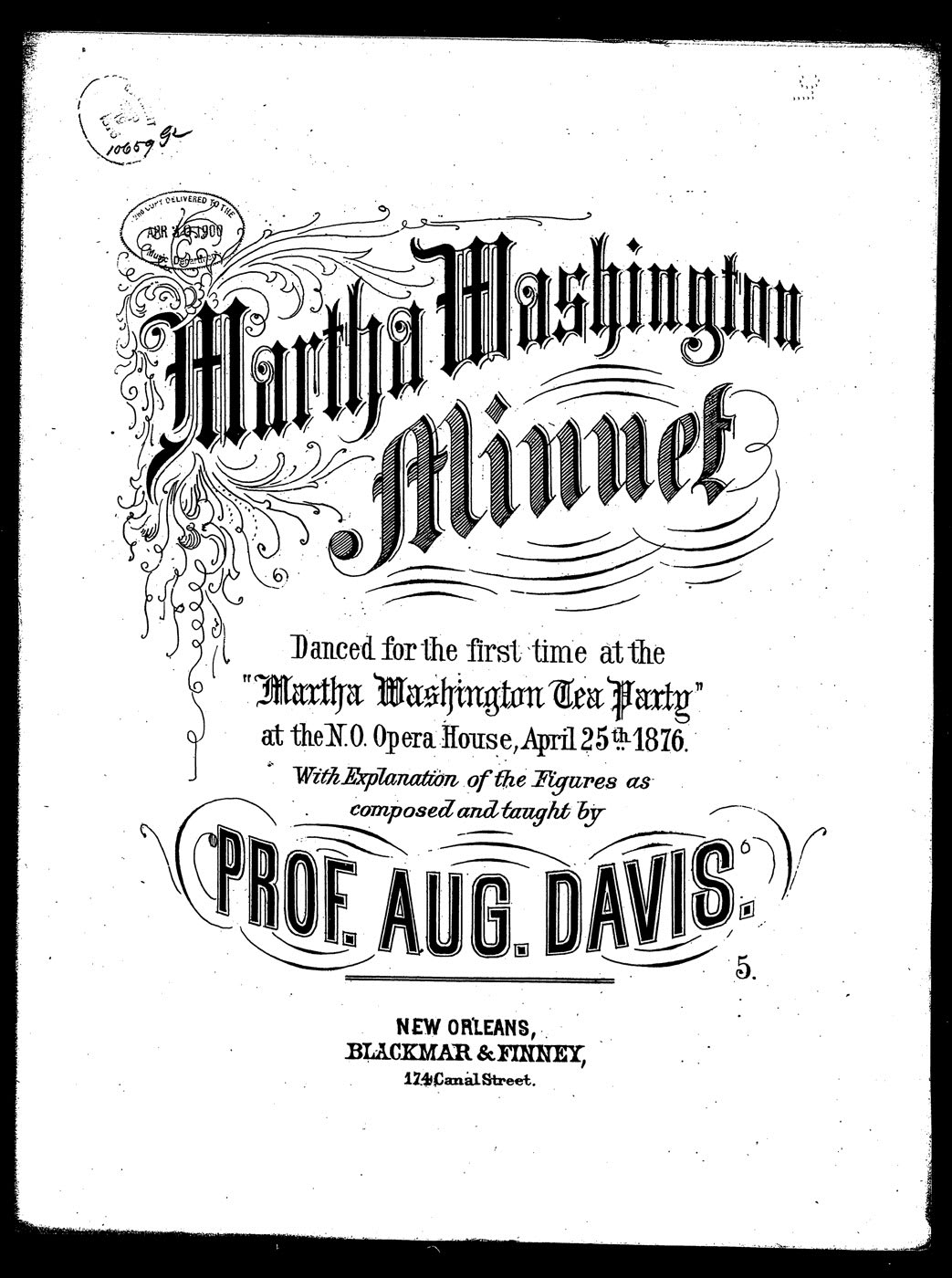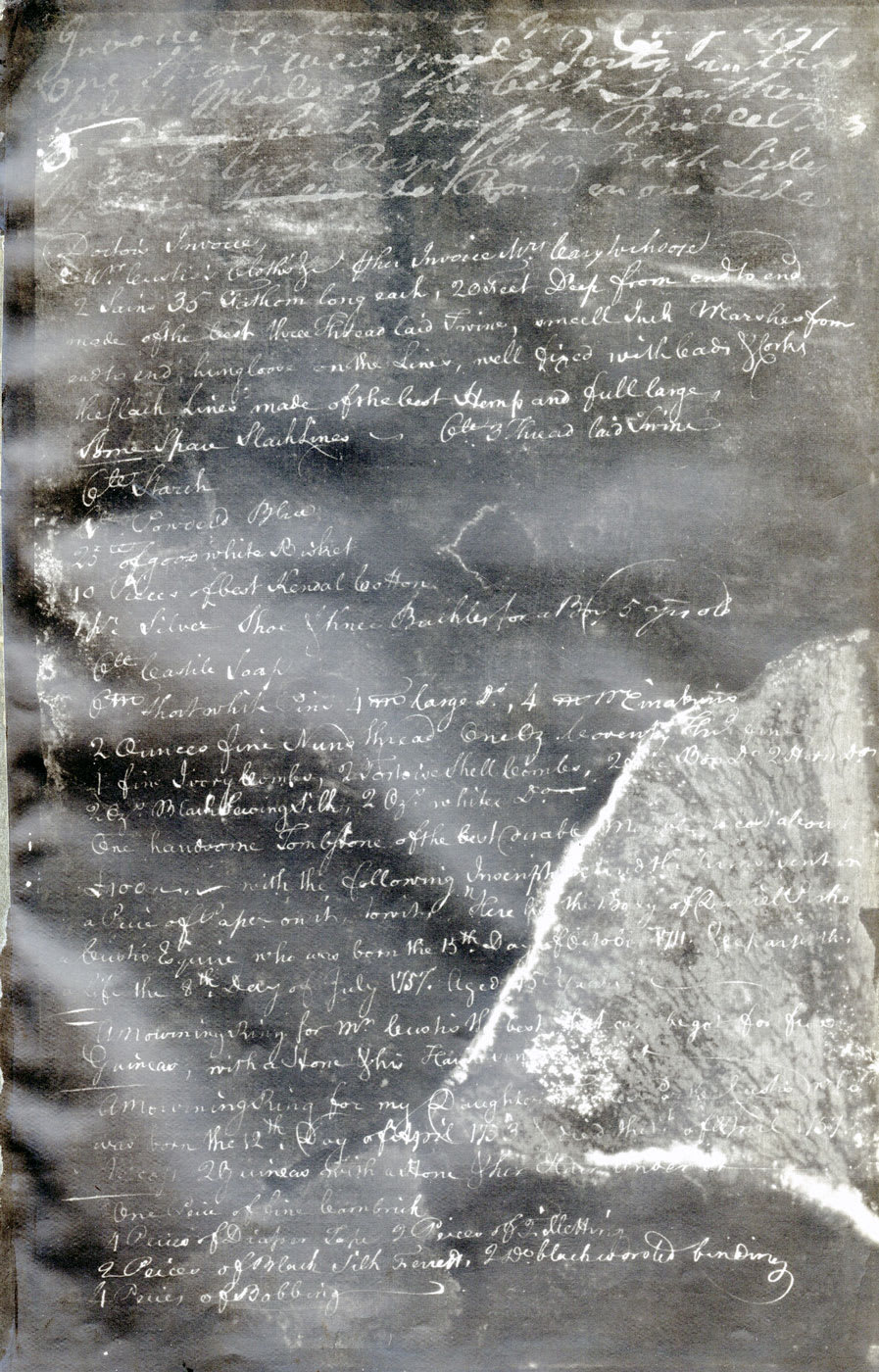Martha Washington could be considered a household name in America. There are Martha Washington cookbooks, children’s books, and even a Martha Washington Minuet!

In my time portraying the first, First Lady, I have met countless guests from all over the country and world who all know Martha Washington. But do you really know her? To continue our celebration of Women’s History Month, I have compiled the top five things you might not have known about this incredible woman.
1. She served as the administratrix of the entire Custis estate after the death of her first husband, Daniel Parke Custis.
When her first husband passed away in the summer of 1757, he died intestate, leaving no executor in place to manage and divide the vast estate. His widow, Martha Dandridge Custis, was named his administratrix of the entire estate. This meant that Mrs. Custis was in charge of settling any debts, ensuring the inventorying and division of the estates, maintaining the management of the estates and making sure everything was running smoothly. Martha, in essence, was in charge. She seemed to waste no time with her new duties. Two weeks after her husband’s death, Mrs. Custis took up his pen and began making orders for the estate: fishing nets for the Pamunkey, starch, pins and a marble tombstone for her husband’s grave. The account books survive and show her tiny handwriting under her husband’s large scrawl. She was an extremely effective administratrix and during her time in charge, the estates profited.

2. She once made a Williamsburg attorney worry that she would give him a bad reference.
To gain an understanding of where everything stood following the death of Daniel Parke Custis, she wrote to the family attorney, John Mercer, seeking an updated account for their family. He seemed to delay in doing so and even went so far as to try and haggle with Mrs. Custis over how much he was owed. This touched a nerve with Mrs. Custis and she seemingly rode all the way into Williamsburg to have a discussion with Mr. Mercer. After their meeting, Mr. Mercer wrote Mrs. Custis, “Madam, I am sorry I put you to the trouble of a Journey to Williamsburg about my Account, as I understand it is only like to produce a Reference, in which I am sure to be the Sufferer.” It seems like she and Mercer made up as he continued as the Custis family attorney for several years after this event.
3. She was inoculated from the smallpox during the early summer of 1776 in Philadelphia and almost spent the quarantine with John Hancock and his family.
After the siege of and subsequent evacuation of the British from Boston in March 1776, the city was completely infected with smallpox. General Washington worried not only about the safety of his soldiers, but also Mrs. Washington, who was with him at the time of the evacuation. Owing to this, and her continued desire to assist her husband, Mrs. Washington made the decision to become inoculated from the smallpox in Philadelphia in May of 1776. John Hancock offered his home to her for the inoculation and subsequent quarantine, but Mrs. Washington politely declined, not wanting to add any extra work to Mrs. Hancock’s already busy household. She instead took the inoculation while staying at William Randolph’s lodging house. She apparently took the inoculation well, as her son, Jack Custis wrote to Gen. Washington in June 1776:
“Your Favor of the 4th inst. which came to Hand last Saturday, gave Me the sincerest pleasure: to hear; that my dearest Mother had gone through the Smalpox so favorably, I do with the most filial Affection congratulate you both on this Happy Event, as She can now attend you to any Part of the Continent with pleasure, unsullied by the Apprehensions of that Disorder; and whose Presence will alleviate the Care and Anxiety which public Transactions may occasion. this Consideration has added much to the pleasure I feel on this Occasion, as your Happiness when together will be much greater than when you are apart.”
Being inoculated from the smallpox allowed Mrs. Washington to attend her husband without fear of contracting the disease, which she would take full advantage of for the remainder of the war. Which leads very nicely into my fourth fact …
4. Martha Washington attended her husband at every winter encampment of the American Revolution, totaling five and a half years of the 8-year-long war.
Martha Washington was at Mount Vernon in the early summer of 1775 when her husband was appointed Commander in Chief of the Continental Army. In one of the very few surviving letters between the two, General Washington wrote to Mrs. Washington a few days after his appointment commenting on his “inexpressible concern” about the “uneasiness” he knew his absence would give her. He went on to say, “I shall rely therefore, confidently, on that Providence which has heretofore preservd, & been bountiful to me, not doubting but that I shall return safe to you in the fall…” He would not see his beloved Mount Vernon for almost eight years. In the fall of 1775, Gen. Washington wrote to Mrs. Washington asking her to join him at the winter encampment at Cambridge, Massachusetts. She eventually made it up to the encampment and a sort of routine began between the two. Every fall, Gen. Washington would call for Mrs. Washington to join him and she would comply, sometimes traveling for days to reach the army. She would spend between six to nine months at each winter encampment, providing comfort to her husband, hosting many events to support the war and earning the title “Lady Washington.”
5. She was human, just like you and me.
I think the most important thing that I try and remind our guests about Mrs.Washington was that she was human. She had fears, concerns and worries. She had a personality, laughed at jokes and even made some of her own! Some of my favorite glimpses into her personality and preferences survive in letters to, from and about her.
For instance, in a letter from Washington’s secretary, Tobias Lear, to her nephew, George Augustine Washington, we see a bit of her preferences in food and how it might tempt her to move a bit quicker. In an effort to encourage Mrs. Washington to hurry her travels up to New York during the first days of the presidency, Lear asked George Augustine to pass along information about the delicious seafood to “Madam Washington…(as she is remarkably fond of these fish) [to] hasten her advancing toward New York… We are extremely desirous of seeing her here.” I can relate, I am also extremely “fond of fish”.
Another of my favorite tidbits about her personality comes from Abigail Adams. She and Mrs. Washington struck up a lovely friendship during the early years of the presidency and even went on several outings with each other and their respective families. For one particular outing to Robert Prince’s Gardens on Long Island, it was suggested that the party take a barge across the water. Apparently, those plans had to be altered because of Mrs. Washington. Mrs. Adams relayed to her sister that, as Mrs. Washington “does not Love the water we agreed that the Gentlemen should go by water and the Ladies should met them at a half way House and dine together.” It seems that Mrs. Washington had some trepidation about going on boats, something to which plenty of people can relate.
Martha Washington has cemented her place in history as the steadfast and loyal wife of General George Washington. Because of this, Americans feel that they know the Washingtons. As Nation Builders at Colonial Williamsburg Foundation, it’s our goal to give more dimension to these larger than life figures and make them relatable, accessible and human. Those moments of humanity that I have found in my research of Mrs. Washington have made her into a three-dimensional, living, breathing person. Hopefully she is someone who you will continue to enjoy getting to know a bit better.
To learn more about the friendship between Mrs. Washington and Abigail Adams, I invite you to join me, as Mrs. Washington, at the Hennage Auditorium on Mondays at 1:30 p,m, for My Dear Madam when we re-open!
Katharine Pittman is a Nation Builder for the Colonial Williamsburg Foundation researching and portraying Martha Washington. Her love of history started young as her parents brought her and her brother to CW with frequency as children, grew while getting her degree from Wake Forest University in history and theatre and cemented in her almost 9 years with the Foundation. Outside of the 18th century, Katharine enjoys spending time with her family, watching Outlander with her girlfriends and drinking massive quantities of coffee.
Resources
Joseph Fields, Worthy Partner: The Papers of Martha Washington, (Westport, CT, Greenwood Press, 1994), 40.
“To George Washington from John Parke Custis, 10 June 1776,” Founders Online, National Archives, accessed September 29, 2019, https://founders.archives.gov/documents/Washington/03-04-02-0380.
“From George Washington to Martha Washington, 18 June 1775,” Founders Online, National Archives, accessed September 29, 2019, https://founders.archives.gov/documents/Washington/03-01-02-0003.
The Papers of George Washington: Presidential Series, 11 vols., eds. Dorothy Twohig et al. (Charlottesville: The University Press of Virginias, 1998-1999), 2:248-49.
“Abigail Adams to Mary Smith Cranch, 11 October 1789,” Founders Online, National Archives, accessed September 29, 2019, https://founders.archives.gov/documents/Adams/04-08-02-0226.
Learn More
Related Events
-
Film: Williamsburg – The Story of a Patriot
See the 1957 film, in its vibrant 70mm format, that tells the story of a Virginia planter deciding to join the patriot cause.
Open to the Public
-
Performance: Washington's Road to Revolution
Join George Washington before he leaves for Congress in 1774 to learn about how the year’s events affected life both publicly and privately on the Road to Revolution.
Art Museums Admission
-
King's Arms Wine Dinner with a Nation Builder
Dine in the company of a Nation Builder and enjoy a chef-curated five-course meal paired with some of Mr. Jefferson's favorite wines from his travels in Europe.
Open to the Public
Event Ticket
